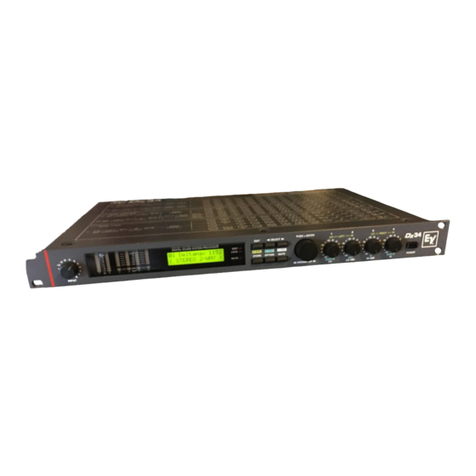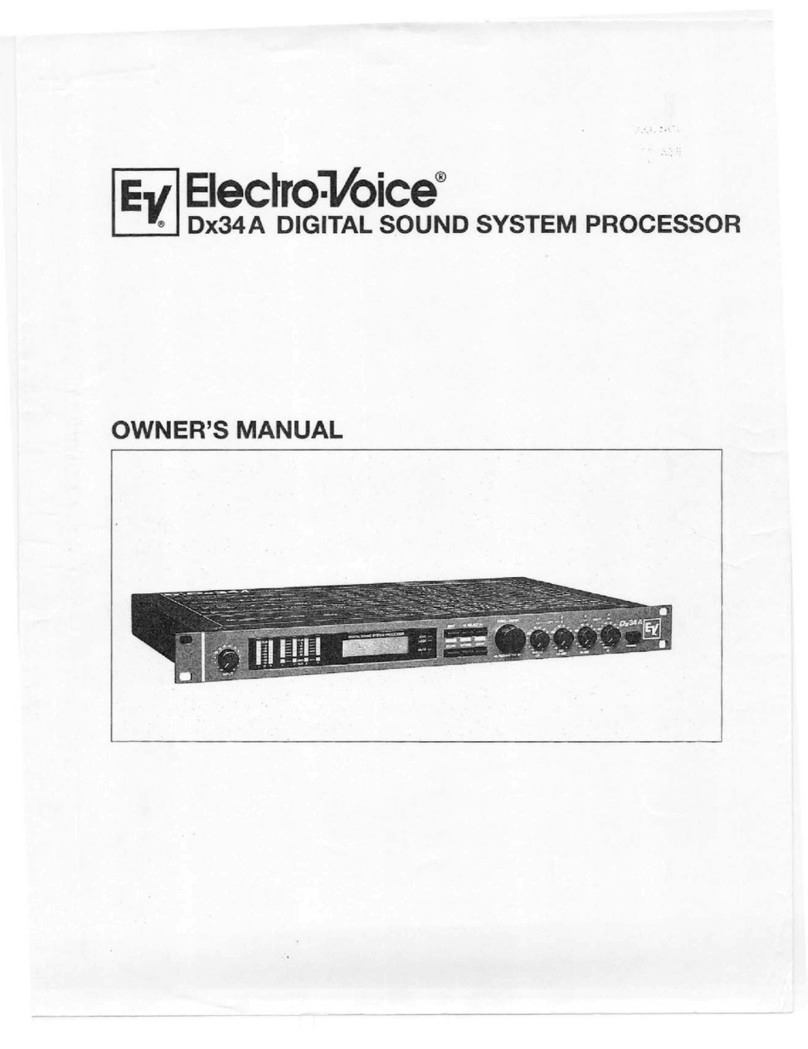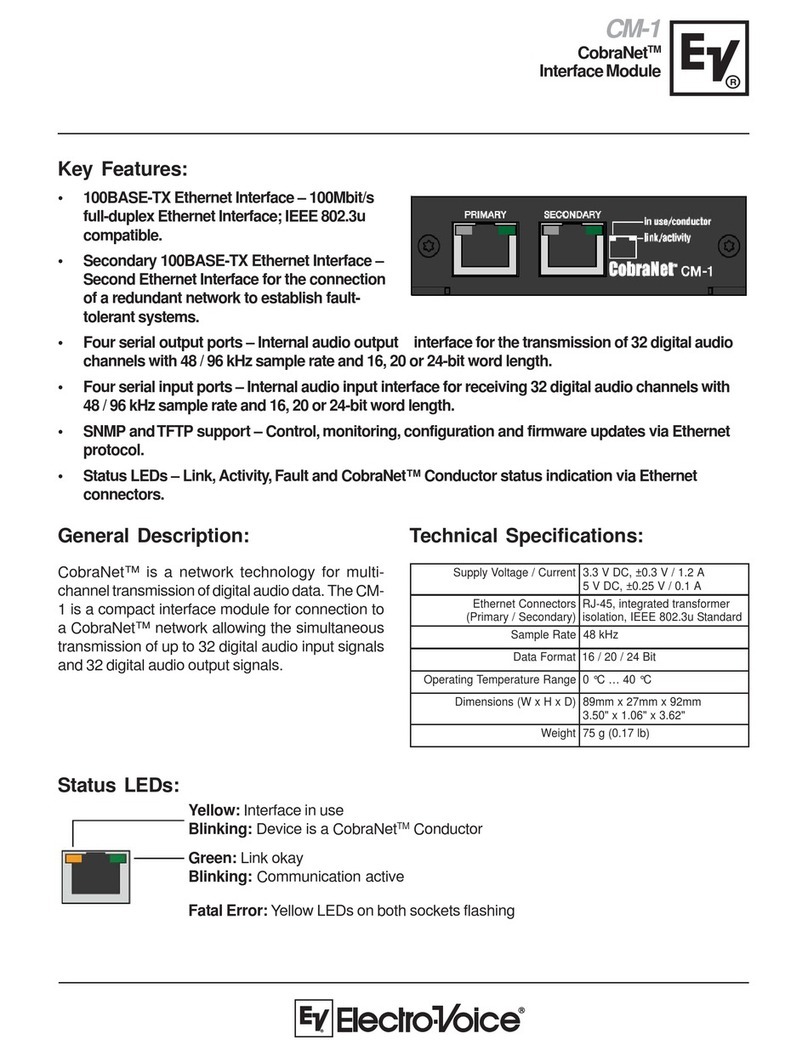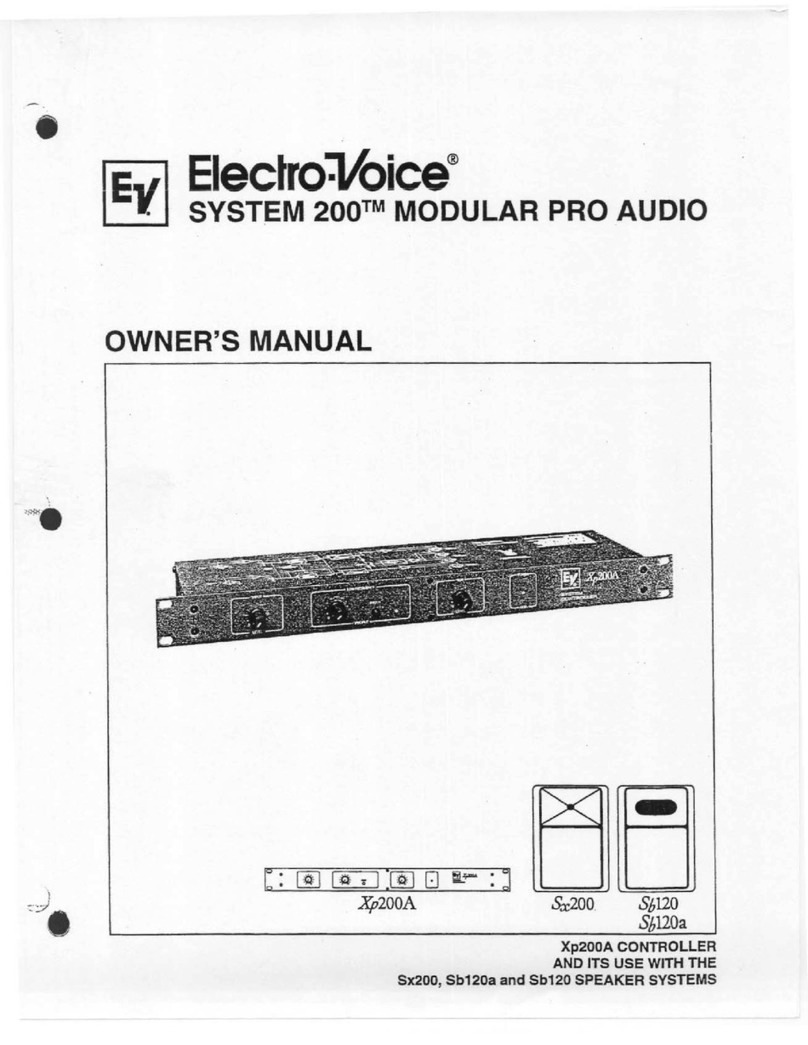Electro-Voice DB23 User manual
Other Electro-Voice Recording Equipment manuals

Electro-Voice
Electro-Voice Digital Sound System Processor Dx34 User manual

Electro-Voice
Electro-Voice FIR-DRIVE DX46 User manual

Electro-Voice
Electro-Voice EVT 4500 User manual

Electro-Voice
Electro-Voice Dx34A User manual

Electro-Voice
Electro-Voice EQ-231 User manual

Electro-Voice
Electro-Voice CM-1 User manual

Electro-Voice
Electro-Voice Xp200A User manual




















